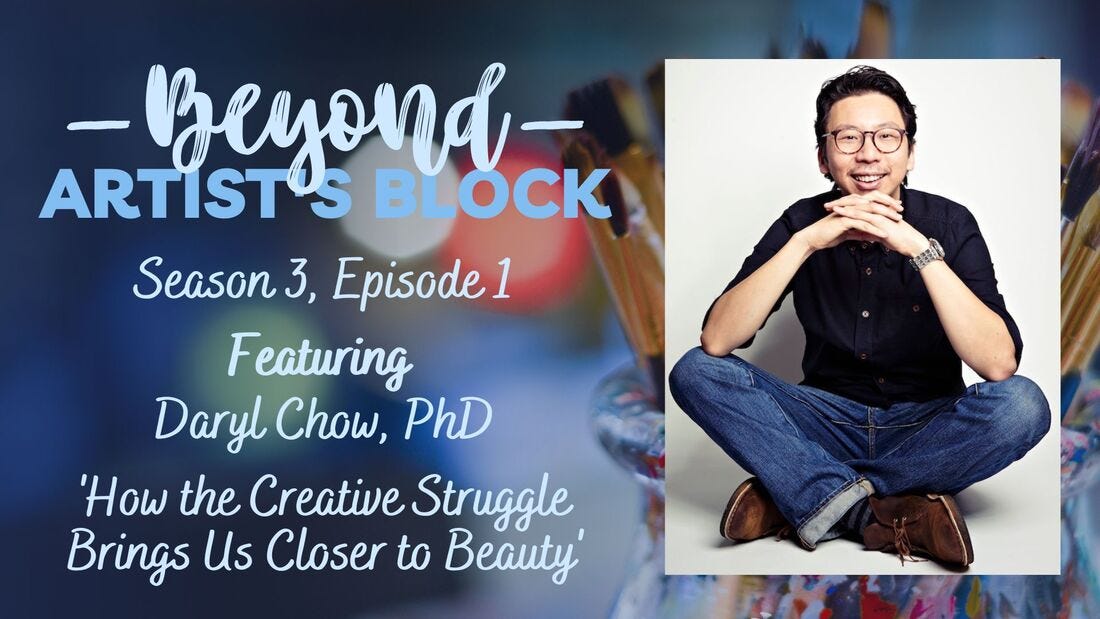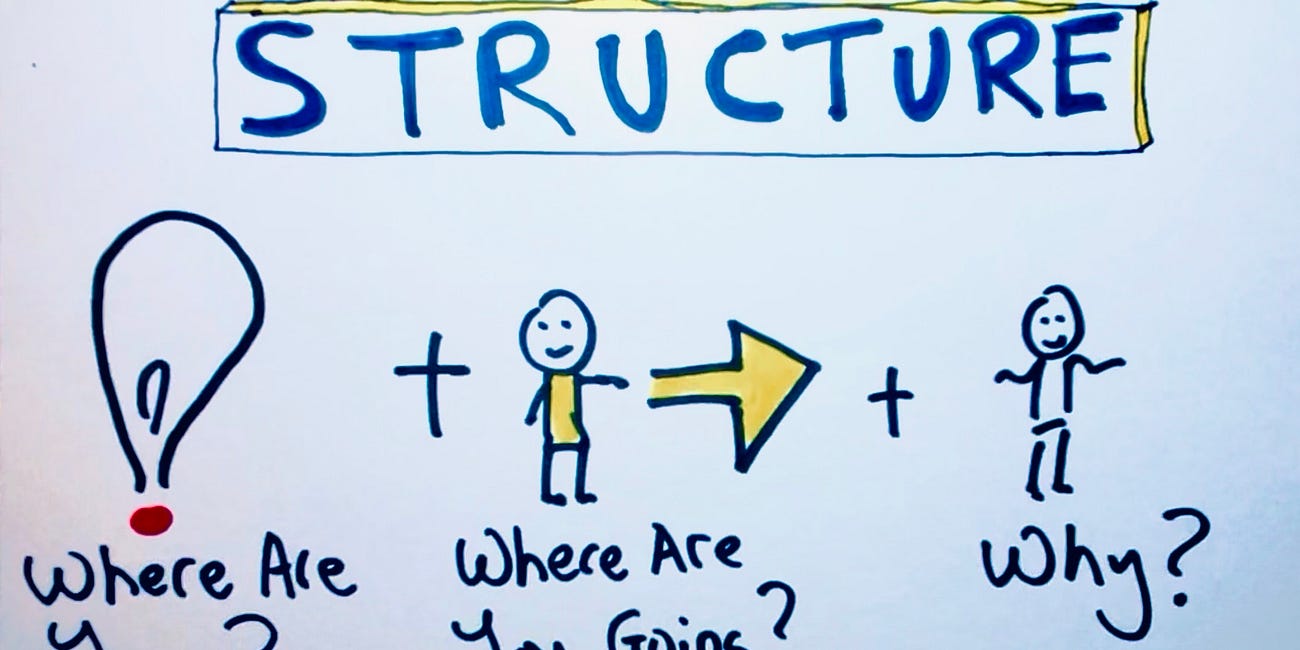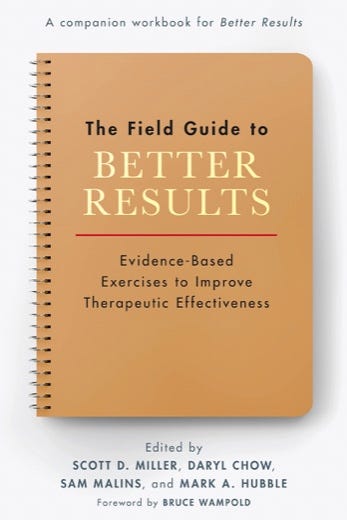Frontiers Friday #132. Structure (Part III) ⭕️
Research findings and lessons from my vault of weekly therapy learnings... Plus, a new podcast episode from Beyond Artist's Block.
A New Podcast Interview
Here’s a recent conversation I shared with Rachel Moore, LMFT on her podcast Beyond Artist Block.
Topics covered in this podcast:
The “terrible gift” of creativity and the beauty and struggle of living an aesthetic life
Understanding the risks creative clients face as artists
The musicality of therapy and working as a “conductor” in the therapy room
What is the meaning of life? (Because we don’t shy away from the big questions here!)
There is a strange paradox. Preparation helps me to be spontaneous.
I’ve often find myself prepping quite a bit before these interviews. What fascinates me about the pre-work is that it’s less about what I should say, but a way to organise and structure my mind, so that hopefully what comes out in the conversation is useful to the listener.
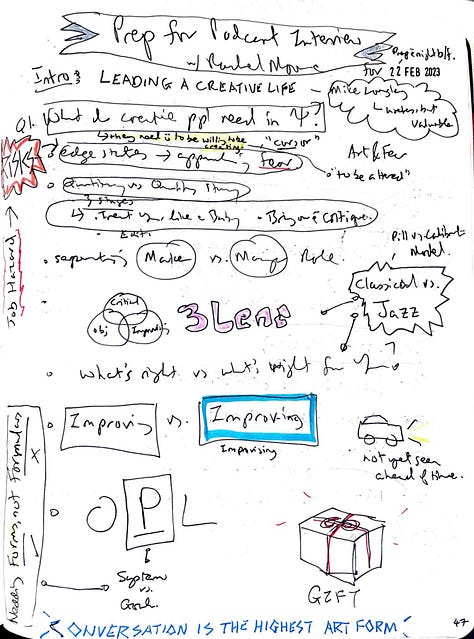
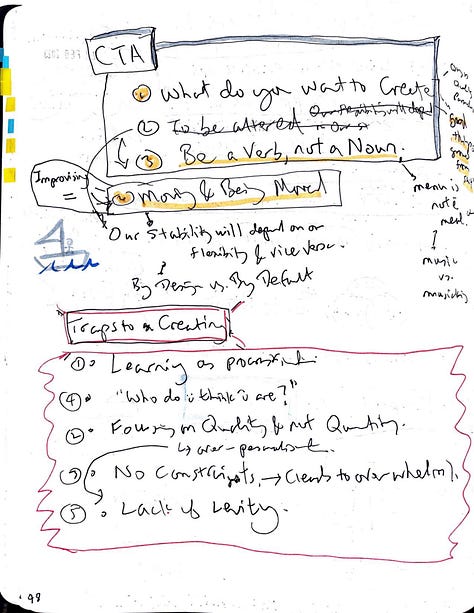
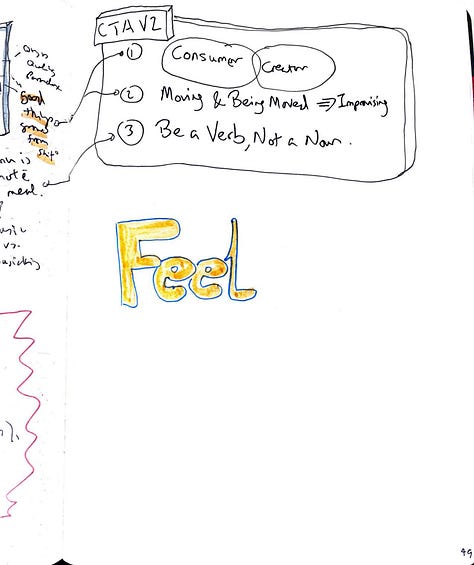
On top of that, a good conversation is not a monological transmission of information from one to the other. It is dialogical. And that makes conversation truly one of the greatest art form. It is our living Jazz. In this instance, Rachel Moore was able to draw and flesh out beyond what’s planned.
Check out this episode, especially if you work with people in creative fields.
…Now back to our series on Structure in Psychotherapy.
In case you missed it, here’s the previous parts:
Research: Antagonism Between Achievement and Enjoyment in Learning
I learned about this piece of research from Scott H. Young, author of Ultralearning. He listed this study in his blog as one of his top 10 favorite paper on the science of learning and thinking.
Key Grafs:
- Students often report enjoying the method from which they learn the least.
- Low ability students typically report liking more permissive instructional methods, apparently because they allow them to maintain a “low profile” so that their failures are not as visible. They will report enjoying methods which appear to them to bring maximum achievement with less investment of time and work
- However, in order to experience maximum achievement low ability students require less permissive methods which lower the information processing load on them.
- High ability students like more structured methods which they believe will make their efforts more efficient. High ability students seem to learn more from more permissive approaches which allow them to bring their own considerable skills to bear on learning tasks.
Implications from learning sciences to psychotherapy:
- Generally speaking, it seems to me that the highly conscientious, motivated and higher-functioning clients want more “structure” in treatment.
- In turn, the less conscientious, less motivated and lower-functioning clients might not be the first ones to put up their hands for “more structure and focus” in treatment. This might be a function of overwhelm and being psychologically drained by the challenges that led them to therapy in the first place.
- The real challenge for therapists is to not only meet where the clients are at, but also to scaffold and provide “a difference that makes a difference.”
- In other words, a higher-functioning clients might benefit from more open-ended guidance (i.e., “Go wide”), while clients who are in more distress might benefit from a more focused and scaffolded approach (i.e., “Go narrow").
- Note: I might have run the risk of over-extrapolating from this single aptitude-treatment interaction (ATI) study.
- The key takeaway is that we are susceptible to be poor judges on how we learn best.My Weekly Therapy Learnings Notes:
I’ve talked about the practice of capturing your own weekly therapy learnings as a practice of weaving your encounters into potential deep learnings.
Here’s two of mine that are related to structure (and blunders):
i. No. 376. "Where Are You?"
Date: 8 Aug 22I found myself asking clients this as an entrance to the session last week, “Where are you?”
"Where are you" denotes
1. A placement of self, and
2. where the person wants to go
It's also not just about what's happening on the outside, but what's happening on the inside.
This is linked to the idea of Fuubutsushi
ii. No. 369. Provide the Intent
Date: 27 Apr 22.Today, I had the Session Rating Scale (SRS) rated lower by a client at 8.5/10 for methods/approach. I wasn’t expecting this. Given that he was highly motivated and doing well, he said he would have appreciated more structure in the session today.
Turns out, what he meant was that he wanted clarity of what we were doing, and why.
Last week, I had a similar feedback from a different client. He rated lower in methods too. He thought I was trying to address a “deficit” in his interpersonal ability, but that wasn’t where I was coming from. I was only trying to understand the relational context, and then go deeper into the intra-personal conflicts that he was facing in his inner-life.
…Then I realised the mistake I’ve made on both occasions: I’ve not made my intentions clear. Argh…
Note to self:
- Explicate my intentions, where we are going and why.Research: The Importance of Problem-Focused Treatments: A Meta-Analysis of Anxiety Treatments
This study is mentioned in our upcoming book, The Field Guide to Better Results. Noah Yulish and Nick Oleen-Junk cited a meta-analysis that Yulish and colleagues conducted in 2017.
Based on 135 studies with more than 175 comparisons, they found that regardless of theoretical orientation, addressing clients’ problems with focused interventions is a key structural ingredient of all effective treatment.
This overlaps my clinical experience, especially when working with people who come in with specific concerns like anxiety-related symptoms. At times, even at the start of therapy, a person with specific problems may report high functioning on global wellbeing scales. In part, this may be due to the specificity of the issue and that it’s not bleeding into their relational and occupational life, and/or may be due to behavioral and emotional avoidance in order to cope, which in turn makes their global functioning scores higher that when they are confronting their fears. In such instances, a focused and structured guidance of the process is likely to be more helpful than a free-flowing, unstructured therapeutic framework.⭕️ Archives From My Desk: Why Structure and Deconstructing Impact
For those who might have missed this two essays.Why Structure Your Sessions
·I’ve listened to hundreds of hours of therapy sessions. When sessions lack impact, a handful of reasons are at play. But at its foundation, it is often contributed by the lack of one key feature: Structure.Thanks for reading Frontiers of Psychotherapist Development! Subscribe for free to receive new posts and support my work.
Deconstructing Impact
In the previous essay, we addressed the three key elements on how you can structure your sessions. The reason we want to take care of how we structure our sessions is because we want to create an impactful experience for our clients. Every session counts. Even the first. As I've written an entire
⏸ Words Worth Contemplating:
"Structure in psychotherapy is the safety net that allows for exploration and growth."
~ Irvin Yalom, Love's Executioner.
Reflection
Take a moment to map this out.
How do you structure your sessions?
What do you notice after doing this exercise?
Daryl Chow Ph.D. is the author of The First Kiss, co-author of Better Results, and The Write to Recovery, Creating Impact, and the forthcoming book The Field Guide to Better Results .

